Amazing Cosmic Objects: Pulsars, Neutron Stars, & Magnetars
Hello awesome people on #Steemit! Today we're going to be discussing about more unusual details and things that you may have not known about Neutron Stars. In this article we're going to talk about pulsars, neutron stars and magnetars and we're going to talk about these unusual strange objects out there that fascinate us and we still know nothing about them.
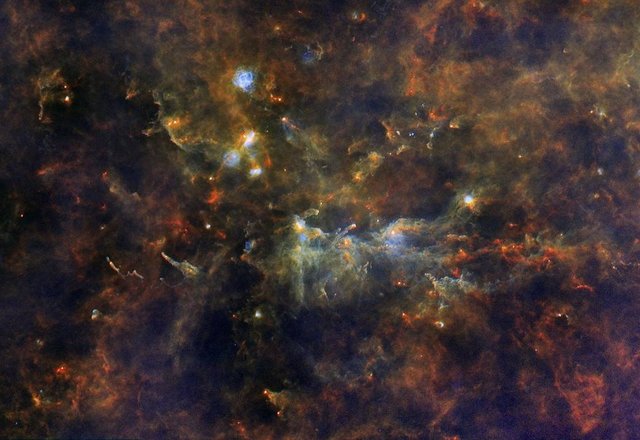
Hope you people will read my article and provide your valuable suggestions and thoughts by commenting below. So, without any further delay let us jump into my article!!
Neutron stars are definitely not something that you think about every day. But they are very unusual! One of the things that you may observe at present is that the neutron star spins ridiculously fast and this is actually one of the more unusual facts about them. They are pretty big. But they spin so fast that standing on the surface of a neutron star would mean that you might be actually spinning at like a quarter of the speed of light. Yet you would not actually fly away from the surface because on top of having an extremely fast spin most neutron stars or I guess all neutron stars by definition are extremely dense and have a ridiculously strong gravitational field. The gravity here is billions and billions of times stronger than it is on the surface of planet Earth. The other thing about them is that they're technically not really stars. They do produce some kind of heat and radiation and they do seem to be very warm and hot and unusually star-like in their appearance and they of course have relativistic effects where they actually bend light that comes close to them.
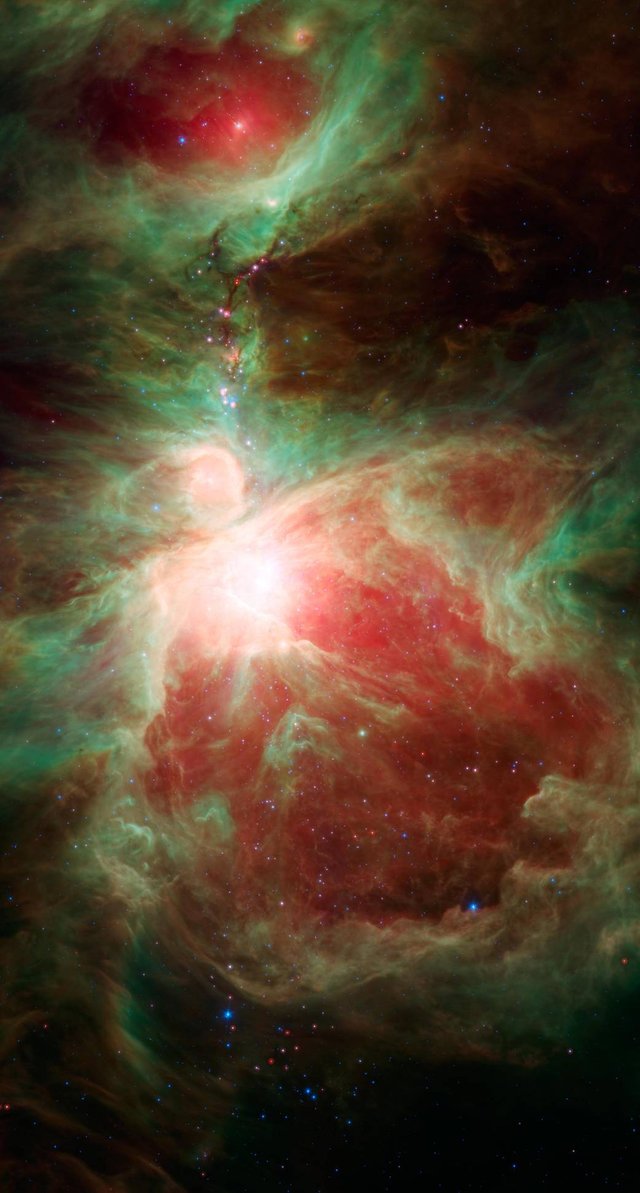
But they are in terms of structure and in terms of actual physical properties more planet-like. As a matter of fact a better word for them would be in neutron planets because their surface is actually crust-like. When they get cool enough less than about a million degrees; they actually becomes hard on the surface. There is no doubt that it's still super hot. But they are very planet-like and they do experience things like earthquakes. So, then in this case it's more of a quark star or I guess neutron quark star and they also experienced other things like volcanic eruptions. So, in that sense this is actually a very unusual object comparable to nothing else in the universe. Now, as the name suggests they're made almost entirely out of neutrons. But on the surface of neutron stars we have other molecules as well. We don't really know exactly what and how they are! But we know that there is iron and we know that there is other metals here just kind of deposited on the surface of the object and the inside is more or less all neutrons. As a matter of fact it's a matter of a material that we sometimes refer to as neutronium. Although, lot of scientists don't seem to like this term.
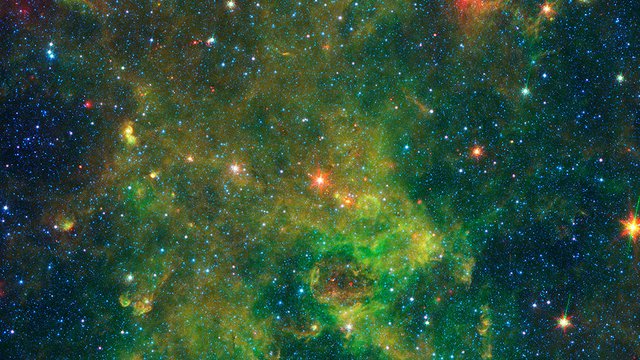
Now there's quite a lot of various neutron stars in space engine and I guess other space simulation as well. But this one is actually the first confirmed and discovered neutron star that we found back in the 1950s. This is the neutron star also known as Crab pulsar and as you can check in the space engine that it also has a very beautiful Celestial disk around it. This neutron star was actually originally observed back in 1000 AD by the Chinese Astronomers. But they didn't really know what they were looking at. They just saw the supernova and following the supernova or I guess the explosion of a very large star what was left of course was this neutron star. This was basically the left over material that is now kind of pulsating and producing all kinds of radiation that reaches our planet Earth. In real time, it spins really very fast and some neutron stars also known as pulsars which is pretty much the same thing that spin so fast that they produce something like 1000 pulses per second. So, basically a single point on the surface will spin 1000 times per second which is ridiculously fast. It's almost the limit of their spin.
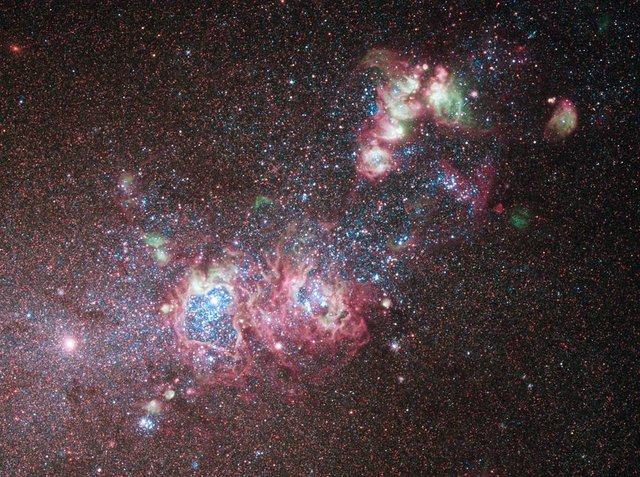
Yet other neutron stars are actually super highly magnetic. They're all technically magnetic. But some of them are so magnetic that they create the most powerful magnets in the universe and so we usually refer to those neutron stars as magnetars. They are so magnetically charged as a matter of fact that they would probably destroy Earth if it ever came remotely close to our planet. So, you can guess that they are very powerful and one scary thing about these objects is that if you ever came close to one or I guess if you actually started falling into one because of the gravitational strength your full velocity by the time you've reached the neutron star would be close to about a third of the speed of light. So, by the time you smack into it you would probably be destroyed in a nuclear reaction. It is so powerful that nothing would be left of you. As a matter of fact even your atoms would fall apart. So, there's almost no practical kind of way to be landing here even though they are sort of planet-like in structure and formation and even though they might actually have hard surface on them and what's really interesting is that a lot of Scientists even speculated about all sorts of planetary conditions on these objects including life.
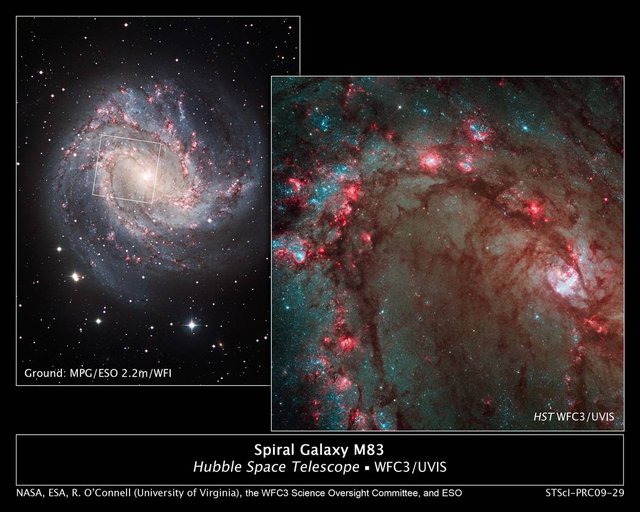
There's even a very famous science fiction book known as Dragons Egg that talks about life that formed on neutron star and that humans communicated with. It's a really cool book you should definitely check it out if you want to learn more about neutron stars and life on them. As the neutron star is so planet-like they have other planetary effects like for example atmosphere. But the thing about atmosphere on the neutron star is less than a foot or less than 30 centimeters in height and there are mountains there too and they're also very tiny only a few centimeters or a few inches above the ground. So, in that sense neutron stars are actually unusually planet-like and so technically these can be either classified as star remnants or the most dense and also the smallest stars out there or you could technically classify them as the densest planetary objects without the actual star. So, we're still don't really exactly know how to really put them into this whole star-planet equation. What we do know however there's about 2,000 of them we've discovered so far in our galaxy and we think there's approximately hundred million of them in total.
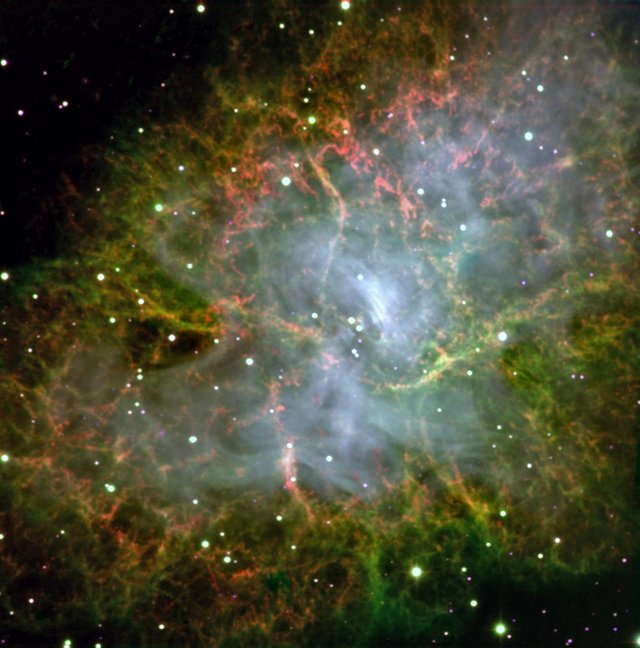
There's quite a lot of these things out there and the closest one to us is at a distance of about 500 light-years away. So, they are not particularly so much close and so don't expect to actually be able to see them with a telescope or anything like that because they are very far and they're very difficult to see. Especially, because they don't really emit a visual light as much as they do x-rays and gamma rays and the typical neutron star. So, for example Crab pulsar is about 1-2 masses of the Sun. As a matter of fact the biggest neutron star we've ever seen is only about 2.01 masses of the Sun. So, they're not really that massive and the stars that were created from were probably about five to maybe ten to maximum 15 masses of the Sun. So, they come from like medium sized stars and what's interesting is that this mass is basically packed in a tiny radius. So, if ever our Earth or the Crab pulsars came near to each other it will going to destroy Earth within no time like in milliseconds. So, this will be pretty much going to be the end of Earth because as Earth accelerates towards the Crab pulsar it's probably going to be spaghettified and will basically turn into nothingness. It's going to create a tremendously powerful nuclear reaction possibly even a nova on the surface of Crab pulsar.
Now, interestingly this actually does happen. They do actually absorb materials from partner stars and also partner planets and they do have planets as well. As a matter of fact there may be the destruction of our planet. It's slowly been shredded apart and these objects are so powerful and so dense and so strong that they can strip a star entirely of its matter turning a star into a planets and so there are cases where actual stars were turned into planets because of neutron stars. Now that will create a weird star instead of neutron star in this case known as the earth nova remnant. So, that's the idea of various neutron stars, pulsars and magnetars which are basically the same sort of species of stars and that's kind of what they're all about and in some of the future articles we'll talk more about the more unusual details that we've discovered in the past few decades studying these objects. Anyway, that's all I wanted to discuss about in this article. Thank you so much for reading this article guys and if you've enjoyed reading the information in this article, don't forget to Upvote.
REFERENCES :


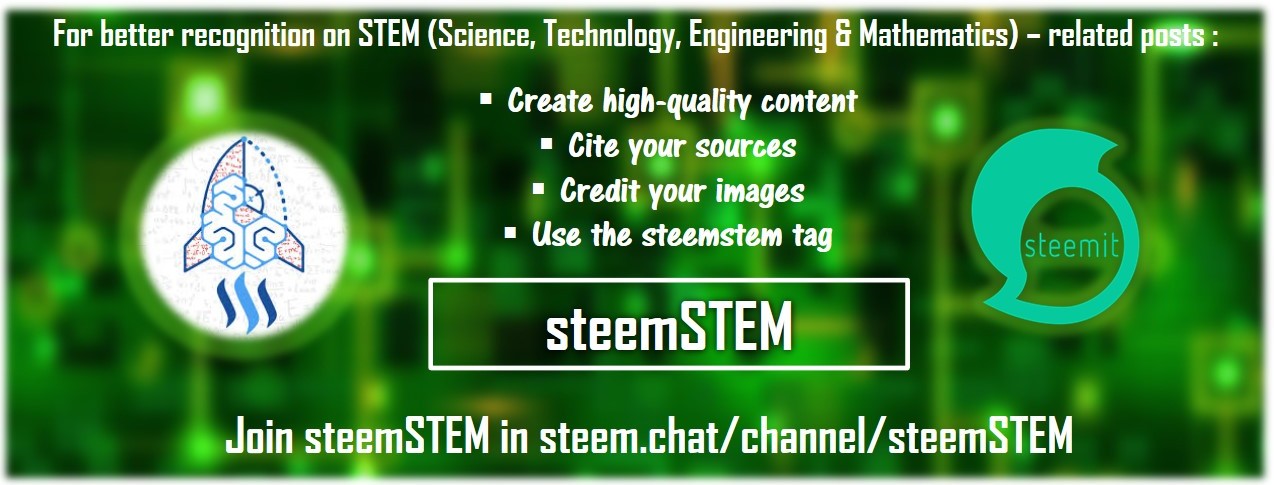
I think I will allow myself for a few comments here :)
Should we bet? :D
What is a neutron quark star? This does not mean much to be honest. By the way, quark stars are hypothetical. They have not been observed so far, in contrast to neutron stars.
Do you know that in state-of-the-art research, neutron stars are used to constrain the properties of dark matter. Since dark matter is expected to interact with protons and neutrons, dark matter can be accreted inside the star and destroy it. However, we have observed old neutron stars, so that the dark matter interactions with neutrons cannot be too strong.
If you are interested by this story, I have written about it ages ago :)
PS: nice post by the way ^^
[let's keep the compliments for the end of my comment]
Better explanation ... impossible :)
I agree that's the speciality of @lemouth!
Cheers.. :)
@carloserp-2000, @star-vc, thanks to both of you for the nice comment. ^^
It's my pleasure @lemouth!! :)
Hi @lemouth! Thanks for the valuable comment full of nicely explanation which made me learn many things in many ways. The above explanation about neutron star and dark matter interaction is awesome. That's why I too guess the neutron star like Crab pulsar which is old as well still existed.
Moreover, about quark star is a hypothetical type of compact exotic star to which I agree that may be in near future we might observe that as well. :) But I really like the guidance you made it for me to which I am really grateful to you!
Thanks a lot for letting me know one more new thing about dark matter you illustrated above which too will help me out in my future articles!! :)
To be honest there is always something important I learn every time from your articles and comments. Hope to receive your guidance in future as well because I am very passionate about knowing and unfolding the mystery of the space.. Thanks once again!! :)
Maybe, who knows? :)
If I have something to say (and if I pass by), I will. The pleasure is for me! ^^
:)
I think about neutron stars all day long :)
Well I too share the same interest of knowing and exploring more about it! :)
Following you buddy to learn more about such topics!! :)
So basically neutron stars are the disco balls of the universe!
Hi @alexander.alexis, you can think so!! Small disco balls.. 😂
Incase you're looking for an article on the Magnetar, @greenrun did a really good post on it sometime ago. You could check it out here
Read your last post on humans living in the sun someday. Twas cool to think of though, and incredibly funny, but i'll pass. lol.
Keep improving bro.
I got the mention...good work here :D
Hi @greenrun! Thanks a lot for the appreciation.. :)
Thanks and sure I will love to explore more about it @pangoli..
Thanks for sharing the information it will help me to improve more!! :)
You're welcome, buddy. One tip though: you don't have to provide links to everything. You can explain it shortly by using a bracket. it works and makes your post more fluid too.
Thanks a lot!! :)
I am always reading with pleasure. Your progress on Steemit was quick and healthy. I have also read lemouth's additions (I always read all comments before commenting myself). The subject is very vast and it seems as the research has slowed down in terms of results lately.
I like how you reference everything back to Wiki and I noticed the link to Anno Domini and I have smiled a little. I'm not implying anything, althouth I tend to use CE & BCE
:)
Cheers and congrats for success!
Hi @alexdory! Thanks a lot buddy for the interest you put while reading my articles. I myself is nothing here compared to many experienced and renowned Steemians like @lemouth, etc.
Writing about space articles by learning through various sources and unfolding different mysteries of space is my passion which I am putting it into my 100%. I just always try to keep on learning more and more about it.
Above of all I am very much thankful to all the members of #steemSTEM for providing us a platform where our knowledge regarding science, technology, engineering and mathematics could be nourished with latest updates in a pretty much ease!
I remember my initial days when I used to ask the different members of #steemSTEM whenever I used to find any difficulties and I must say within few seconds there used to be lots of person who came to help me out on which I am very proud of #SteemSTEM. This effort and environment of helping and sharing knowledge to help and lift the others authors up is appreciable!! I am very much thankful to all the members because of whom I have been able to do it!!
@alexdory: I also smiled for some of the provided links :)
:D
It’s just so beautiful and breathtaking
Hi @dawnchurch3! Thanks a lot for the compliment. :)
I enjoyed reading your article. The Universe is amazing.
I learned about these planet-like features. The thought of Earth being destroyed in milliseconds gave me a very intense idea of their power ;)
You could also have mentioned how we have discovered gravitational waves in the collision of two neutron stars, and how gold has been detected then, and how amazing it is that maybe the gold we have here on Earth, has come from a collision of neutron stars maybe billions of years ago. It is so fascinating. But that's a huge discovery worth of its own article :)
I find hard to believe that life could be there on them. Also you didn't reference it. For me they are more related to death than life, They are like failed black holes that didn't get enough density, waiting to keep growing in the next event to finally be born as a beautiful black hole baby :D
nice to find your blog. Following you for your next posts ;)
Hi @hedac! Thanks for showing your interest in reading the article. You are correct it's very much fascinating!
The reason I didn't mentioned about detection of gold was because I was taking care of not making the article more lengthy as it is a very vast area for exploration! Also some of the things I explained in my past articles and some of them I have stored for my future articles.. :)
Moreover, I think I have given sufficient references about the information I shared in the article. But thanks for taking out these points for me, this will indeed going to help me a lot!! :)
Following you too!!
Cheers!! ;)
Thank you! I'll read your previous articles too when I have time :)
Sure... :)
que bien
Hi @gladysob! Molte grazie!! :)
Hi frend please upvote me
Hi @kyawzaywin! Look friend this is not the right way of asking for upvotes! The author may take it in a wrong way and some can even flag you if you continued so.
Some of the simple steps that might be helpful for increasing your upvotes can be first of all increase your quality of article, appropriately quote the references you used in writing the respective article. Put the free images related to your article from Wikipedia or pixabay and carry on writing the original content with deep research work.
Moreover, you might engage with other experienced authors, read their articles and raise any queries if you don't know about something in the article. In that way develop a bonding with other which might help you with pretty much improvements!! :)
This is really not what we see everyday read about always and I dont even know about neutron starts originally but I really have learnt from this
Now that is something am putting in library
Hi @mittymartz! Thanks a lot for the appreciation. :)
Sometimes, how gravity gets pretty powerful enough to bend light is pretty amazing, something i'd love to observe someday if i could (without getting myself pulled in, of course)
Hi @pangoli! The mystery of the cosmic world is amazing. Everytime when we assume that we came to understand everything about something the another mystery unfolds... That's the beauty of this universe!! :)
It really is incredible. i know little about the universe though. Neutron stars, pulsars and quasars. However, it's something i'm willing to explore soon.
It's great then!! Waiting for your article to read then.. ;)
Cheers!! :)